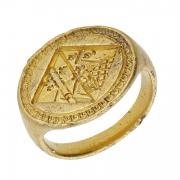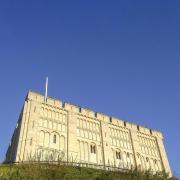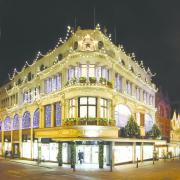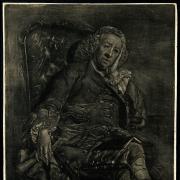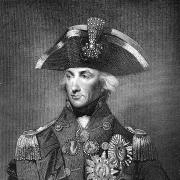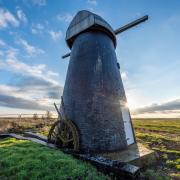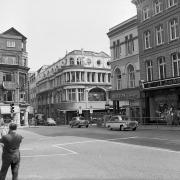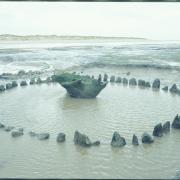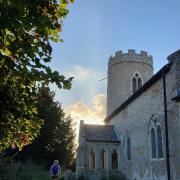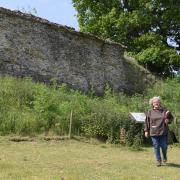Chris Armstrong investigates the lives of two Norfolk brothers, both touched by the breath of scandal but who each led lives of great achievement
Sometimes things don’t turn out as you expect. A while ago I decided to research George Manby, an inventor. I knew a little about him – that he had invented an early fire extinguisher, and the Manby Mortar, used to fire a line to ships trapped on a lee shore to facilitate the rescue of crew and passengers.
I knew that he had the distinction of becoming a Fellow of the Royal Society, and I suspected there was far more to find out. There was, but what I also discovered was that his younger brother, Thomas, a naval officer, lived a life of adventure and achievement too. Which of them should I research for this article? Eventually I decided to write about them both.
They were the sons of Captain Matthew Pepper Manby, a former officer in the Welsh Fusiliers and a friend of, and ADC to, Field Marshal the Lord Townshend. Their father was a wealthy man, and they benefited from a comfortable upbringing and the prospect of patronage. The family home was Wood Hall at Hilgay, near Denver, a property which was for sale a couple of years ago for over £9,000,000.
George was educated at a local school in Downham Market, and subsequently at the Grammar School in King’s Lynn. Thomas was, by the age of 14, already a midshipman under the patronage of the Townshends.

Each brother had a brush with scandal in his life. George separated from his first wife, who had run through both his fortune and her own, when he caught her in flagrante with an officer of the East India Company, Major Pogson. That gentleman shot and wounded George in the back of his head and he departed in pain, in debt and, probably, in high dudgeon.
Thomas was widely believed to have been the lover of Caroline of Brunswick, estranged wife of the Prince of Wales, and was one of the subjects of what was described as ‘the Delicate Investigation’ conducted by the Prime Minister into her conduct on the direct request of her father-in-law, George lll. Little useful emerged from this investigation– plus ça change.
Thomas was, on another occasion, involved in a duel. The press, with remarkable sangfroid and amongst a list of similar events, recorded that in April 1808 Thomas, by then Captain of HMS Thalia, met Captain Ramsey of the Royal Marines on Southsea Common with a view to settling their differences.
As they were agreeing on the distance from which they would fire an emissary from the Admiral arrived and placed Thomas under (presumably protective) arrest. After firing just insults at each other rather than pistols Thomas was hurried away and sent to sea the next day. Poor Mr Vance, a surgeon from Haslar Naval Hospital who had come to provide medical attention if needed, found he had got up early for no good reason!
But each brother achieved much in his life. George, who had a brief military career, became a writer of some note, his works including his thoughts on the defence of England against an anticipated French invasion.

This pamphlet so impressed Robert Hobart, the Secretary for War and the Colonies, that George was appointed Barrack-Master at Great Yarmouth. It was while serving in that role, it is generally believed, that he conceived the idea for perhaps his best-known invention, the Manby Mortar.
In 1807 during a violent storm, he was one of the horrified but helpless spectators as nearly 70 passengers on HMS Snipe perished only about 60 yards offshore when the ship grounded. An attempt by a crew member to carry a line ashore to pull others to safety failed when he became so entangled in the rope in the rough seas that he strangled himself.
George Manby, distressed by what he had seen, came up with a more effective scheme for such situations. He developed a mortar which fired from the shore a shell to which was attached a very light line; the shore end of this line was attached to a stronger rope.
When the shell overshot the ship some of the line attached to it would land on the deck and, hauled by the crew, would soon bring the heavier rope on board, enabling passengers to work their way ashore while clinging to it.
The success of this plan not only was the basis for the later design of the breeches buoy, but, believed Manby, saved over 1,000 lives. Although he was awarded a gold medal by the Royal Humane Society, he felt his originality had not been adequately rewarded and was successful in persuading the relevant Committee of the House of Commons to recommend an award of £2,000.

Manby mortars became standard equipment in many coastal areas – by the late 19th century there were over 300 stations using his mortar. Later, he developed a portable fire extinguisher, very similar in appearance to the ones of today, and various other life-saving products, including a specially reinforced blanket into which anybody trapped by fire in the upper storeys of a building could jump.
Not all his inventions were so successful – he had to be rescued when trialling an ‘unsinkable’ boat he had invented, which sank. Another invention which didn’t work out was a powered harpoon gun, which he developed for the use of whalers.
On both occasions Manby seems to have been the victim of maritime Luddites – the men who threw the harpoons, proud of their skill and in receipt of a good income simply refused to try the new harpoon gun out. In the case of the boat, some of the sailors who carried out the trials induced the boat to overturn – they depended on salvage from wrecks for a part of their income.
Meantime, brother Thomas was pursuing a Hornblower-like career in the Navy. His early travels took him to the Caribbean but his big break came as a 21-year-old, when Kings Lynn-born George Vancouver appointed him as master’s mate on the HMS Discovery as it set out for a four-year exploration of north west America, having travelled there via Cape Town, New Zealand, and Tahiti.

During the trip Thomas was promoted, first to be master of the accompanying HMS Chatham, and then as a lieutenant on the Discovery. He doesn’t seem to have been very keen on Vancouver, quoted by one source as finding him ‘haughty, proud, mean and insolent’.
Nonetheless his rapid promotions following some magnificent seamanship in difficult circumstances, on one occasion conning the ship through surge-driven surf from the fore-top-sailyard while the seas swept the deck, and the glamour of the expedition did his career no harm.
When the Discovery had sailed, in 1791, war with Spain had seemed a distinct possibility, when she arrived home, in 1795, war with France was a fact, and Thomas was in demand, serving briefly as a Lieutenant under Pakenham before being promoted to Commander of HMS Charon which was deployed to defend merchant ships and, occasionally, as a troop transport ship.
Not only did he manage to provide protection for nearly 5,000 ships during a two-year posting but he also captured a French privateer, the Alexandrine, and led a few shore expeditions to frustrate Irish rebels around Waterford.
His reward was to be promoted post-captain shortly after his 30th birthday, and he was appointed as commander of another captured French privateer, the Bordelais. This may have seemed a mixed blessing. Although an exceptionally fast and well-armed ship she was not of robust construction – in naval circles she was nicknamed ‘The Coffin’.
Again, he was successful, first re-capturing two British ships from their privateer captors, before taking a valuable prize, and then, when posted to the Caribbean, sinking a French warship, Le Curieuse. For part of this commission, he had on board his brother, George, reputedly fresh from debtor’s prison and recovering from an operation to remove slugs from his skull, after being shot by Major Pogson.
A temporary lull in hostilities with France saw Thomas without a role but Earl St Vincent, an admirer of his skills and temperament, soon appointed him to the command of the Africaine, a fine frigate, and until war with the French resumed he was on Royal duties – this was the period of his alleged affair with the Princess of Wales.
He then spent a long period as part of the fleet employed to keep the French in harbour, before another expedition to the West Indies, where he contracted yellow fever while transporting wounded and sick soldiers home. The outbreak on the ship was so severe that both surgeon and assistant succumbed, Thomas taking over the care of the patients, guided by a doctor who, at St Kitts, came alongside in a small boat and shouted instructions to him. Despite his ministrations about a third of his crew died and the ship had to self-isolate off the Scilly Isles before returning to Falmouth.
His health deteriorated – both the yellow fever and various wounds affected him, though he was still fit enough to be ready to fight that duel in Southsea. By then he was in command of HMS Thalia. As a ‘last hurrah’ he captured one more French privateer, before retiring first to Norfolk, and later to Dorset.
As was the process in those days he continued, on a time-served basis, to gain promotions becoming a Rear Admiral. Sadly, despite marrying and having a family, unable perhaps to cope with ill health and inactivity, he died from an overdose of the opium to which he had become addicted, at the age of 65.

George Manby lived on to nearly 90. Not an entirely attractive character, he was an inveterate sponger on his friends, happy to leave his second wife almost destitute in Yarmouth while he clung grimly on to the London coattails of anybody who might help in his relentless and unsuccessful pursuit of the knighthood he felt his due.
He was so anxious for public recognition that, when Yarmouth didn’t honour him with a monument, he erected one himself. When the town declined to provide a site for it, he had it placed in the tiny front garden of the small suburban villa in which he then lived, having been evicted from his official residence for persistently failing to discharge his responsibilities as Barrack-Master.
For all his failings, his was a remarkably original mind, which he applied assiduously to the saving of life and he was actively involved in the establishment of what is now the RNLI. Along with his swash-buckling brother Thomas, he deserves to be remembered in Norfolk with pride.





